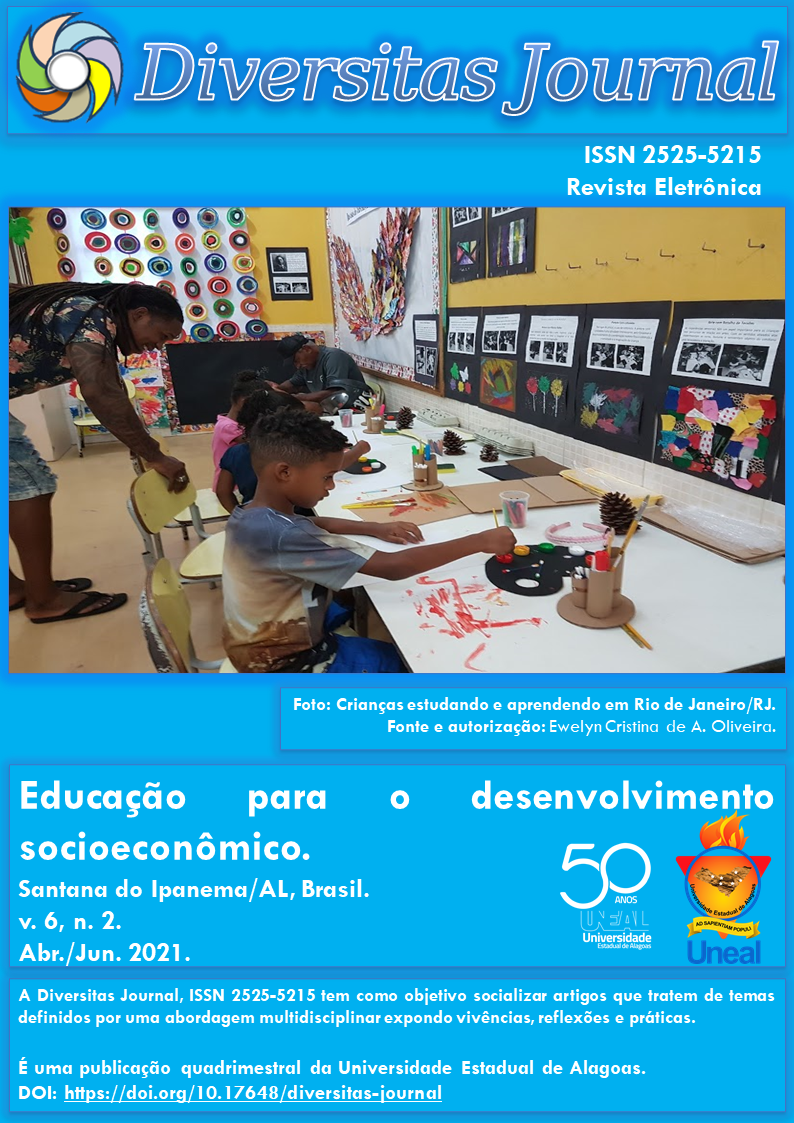Isolamento de rizóbios de nódulos de Phaseolus vulgaris cultivado em duas regiões de Alagoas
DOI:
https://doi.org/10.17648/diversitas-journal-v6i2-1379Abstract
ABSTRACT: An important attribute of the common bean is its ability to symbiotically associate with rhizobia, forming nodules, where the process of biological correction of atmospheric nitrogen occurs. The objective was to determine the rhizobia diversity gained from common bean plants collected in fields in two regions of the state of Alagoas: Agreste and Sertão, in the municipalities of Santana do Ipanema and Arapiraca, respectively. Three sowing density were evaluated, being: 60,000, 120,000 and 180,000 plants/hectare, using a completely randomized design with three sowing densities and 6 plots. For the collection of nodules, a circle was demarcated around the plant corresponding to an area of the root system, a circle of approximately 15 cm was used around the plant with a dug depth of 30 cm. Disinfestation was performed in an aseptic chamber, with all solutions, water and material used being previously sterilized. The growth of the Rhizobia colonies was verified daily for 10 days, after the growth as different colonies were raised to another plate with YEM culture medium. The results were discovered at the Tukey test at the 5% level. It was found that the higher the planting density, the greater the number of colonies identified in the plant nodules and that the region of the Alagoas sertão presents greater nodulation capacity compared to an Agreste region. In both areas, acid and alkali formation is observed. In addition, the possibility of the Sertão more diverse morphological specialties, suggesting that the microorganisms of this area have a greater adaptation to the conditions of the studied areas.
KEYWORDS: Alagoas; Beans; Atmospheric Nitrogen.
Metrics
Downloads
Published
How to Cite
Issue
Section
License
Copyright (c) 2021 Neilson Silva Santos, Esmeralda Aparecida Porto Lopes , Alexandra de Andrade Santos , José Crisólogo de Sales Silva, Joice Kessia Barbosa dos Santos , Luiz Eduardo Bezerra Silva

This work is licensed under a Creative Commons Attribution 4.0 International License.
The Diversitas Journal expresses that the articles are the sole responsibility of the Authors, who are familiar with Brazilian and international legislation.
Articles are peer-reviewed and care should be taken to warn of the possible incidence of plagiarism. However, plagiarism is an indisputable action by the authors.
The violation of copyright is a crime, provided for in article 184 of the Brazilian Penal Code: “Art. 184 Violating copyright and related rights: Penalty - detention, from 3 (three) months to 1 (one) year, or fine. § 1 If the violation consists of total or partial reproduction, for the purpose of direct or indirect profit, by any means or process, of intellectual work, interpretation, performance or phonogram, without the express authorization of the author, the performer, the producer , as the case may be, or whoever represents them: Penalty - imprisonment, from 2 (two) to 4 (four) years, and a fine. ”















.png)




